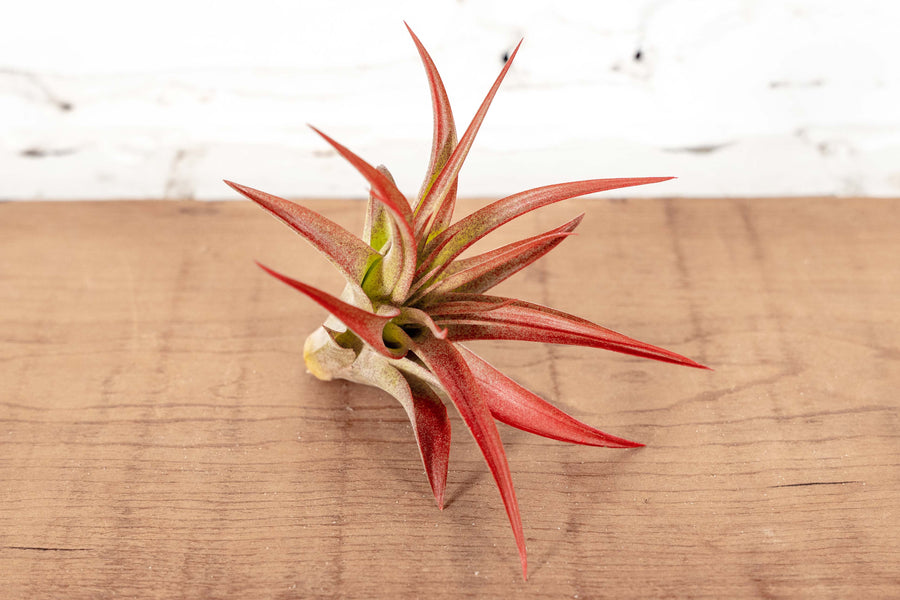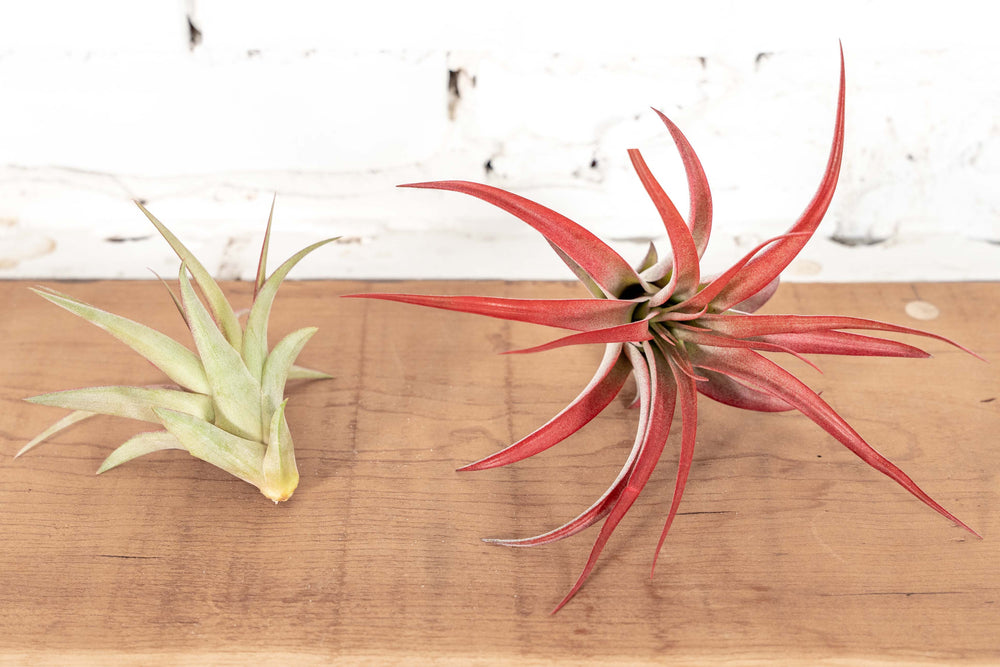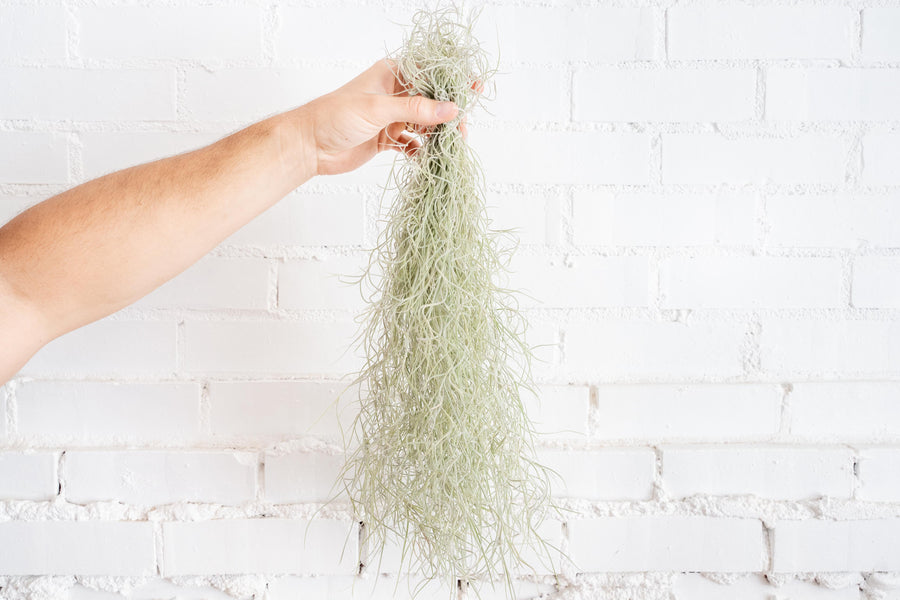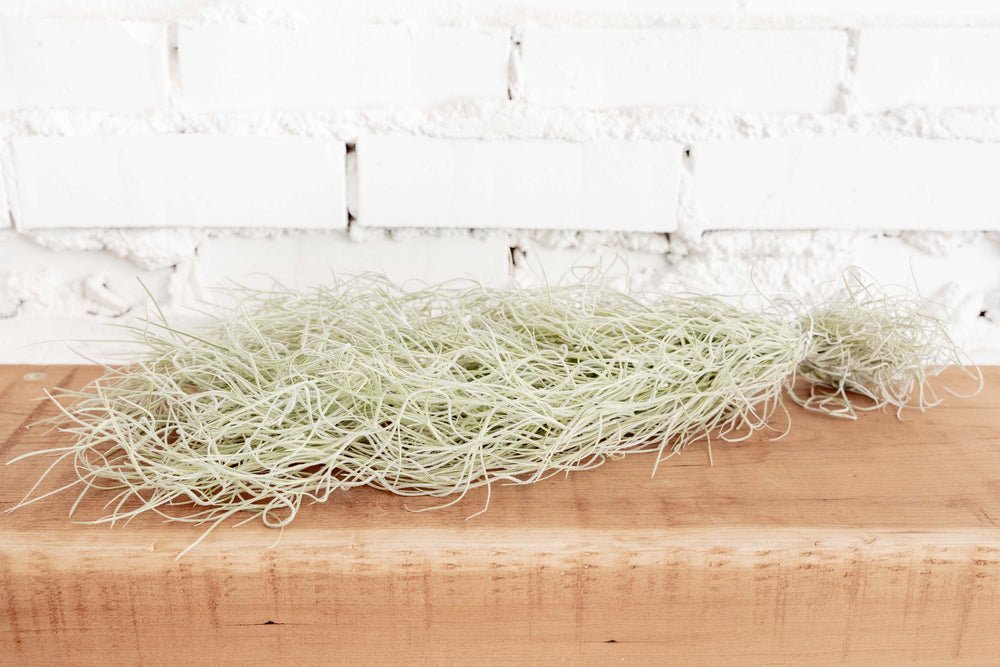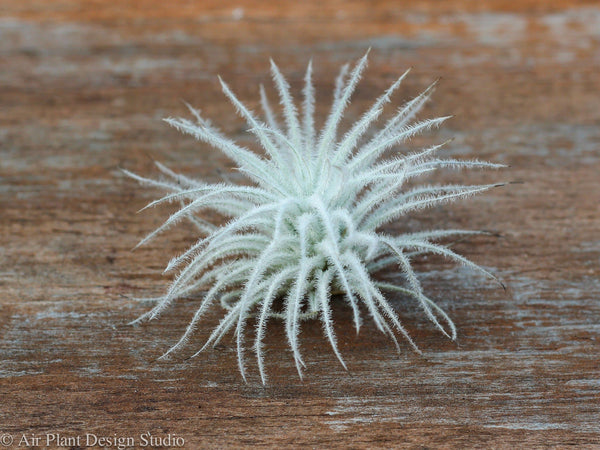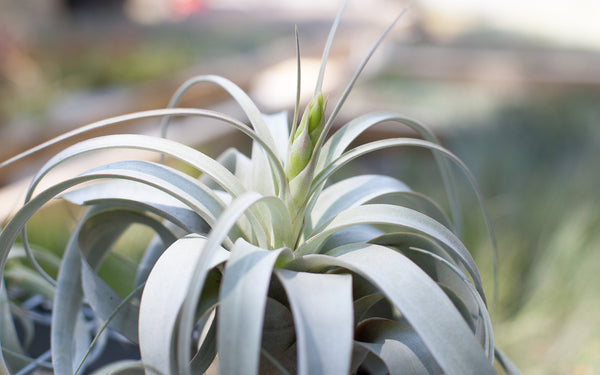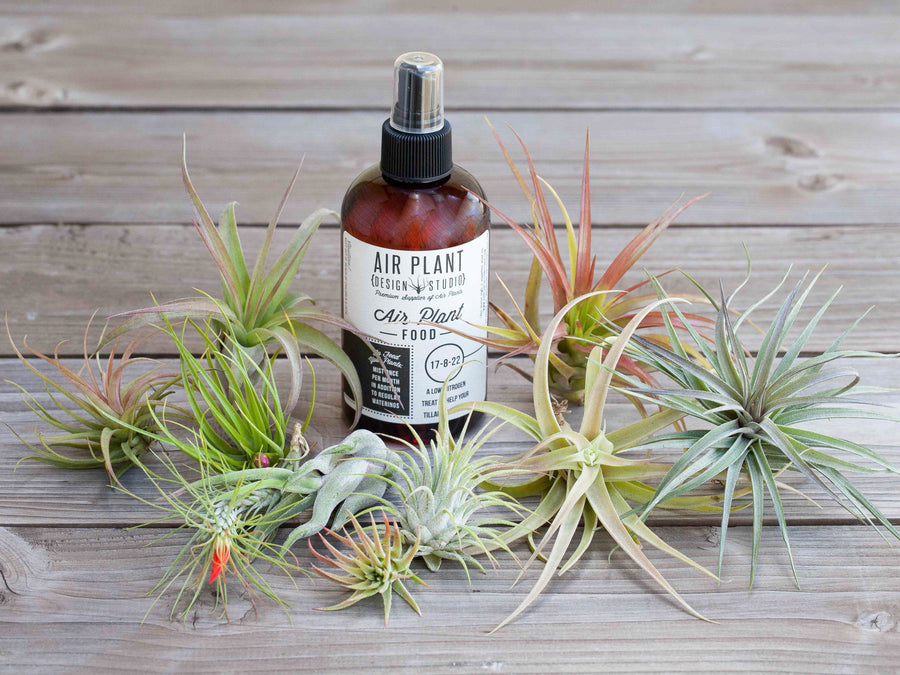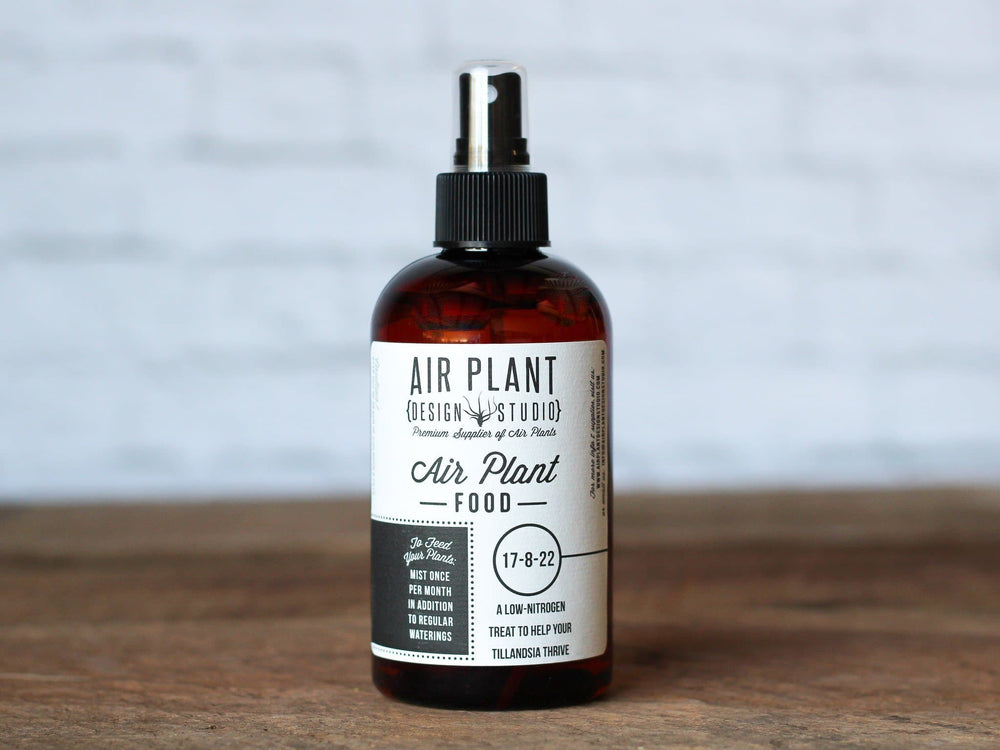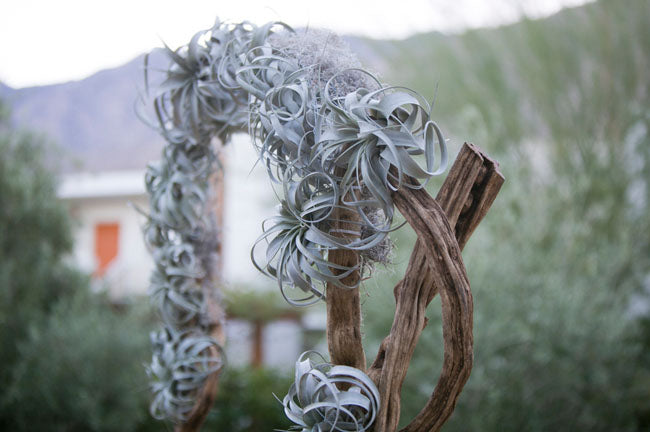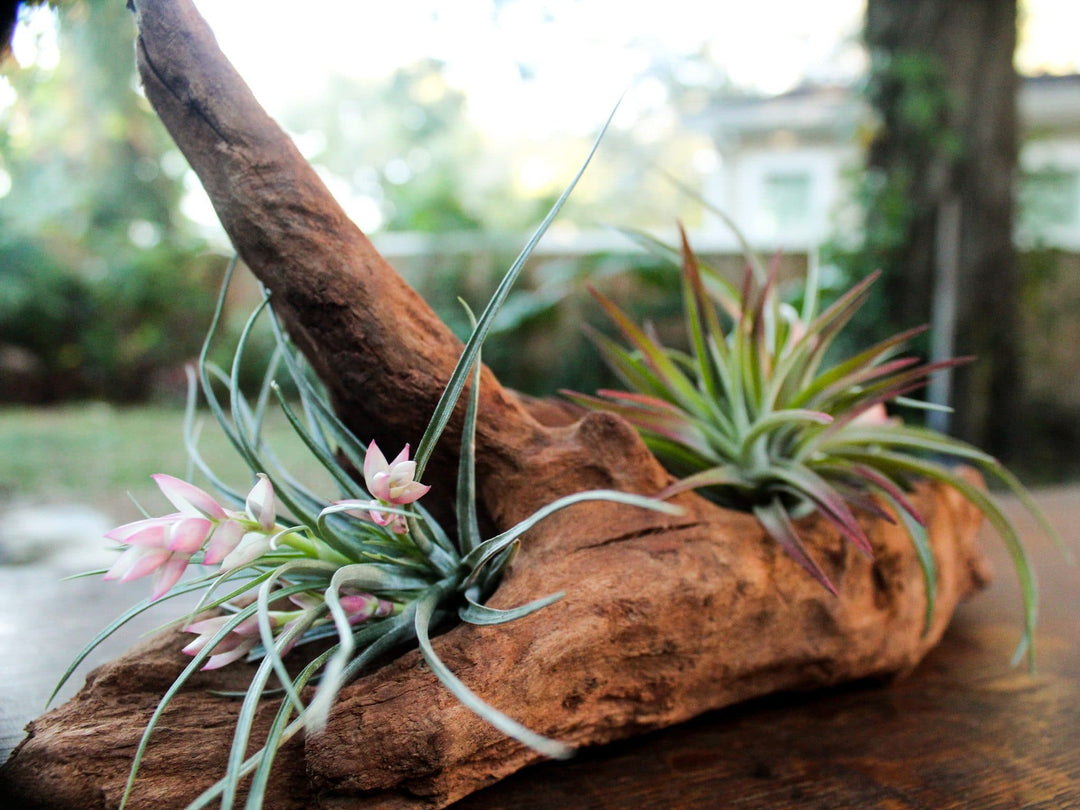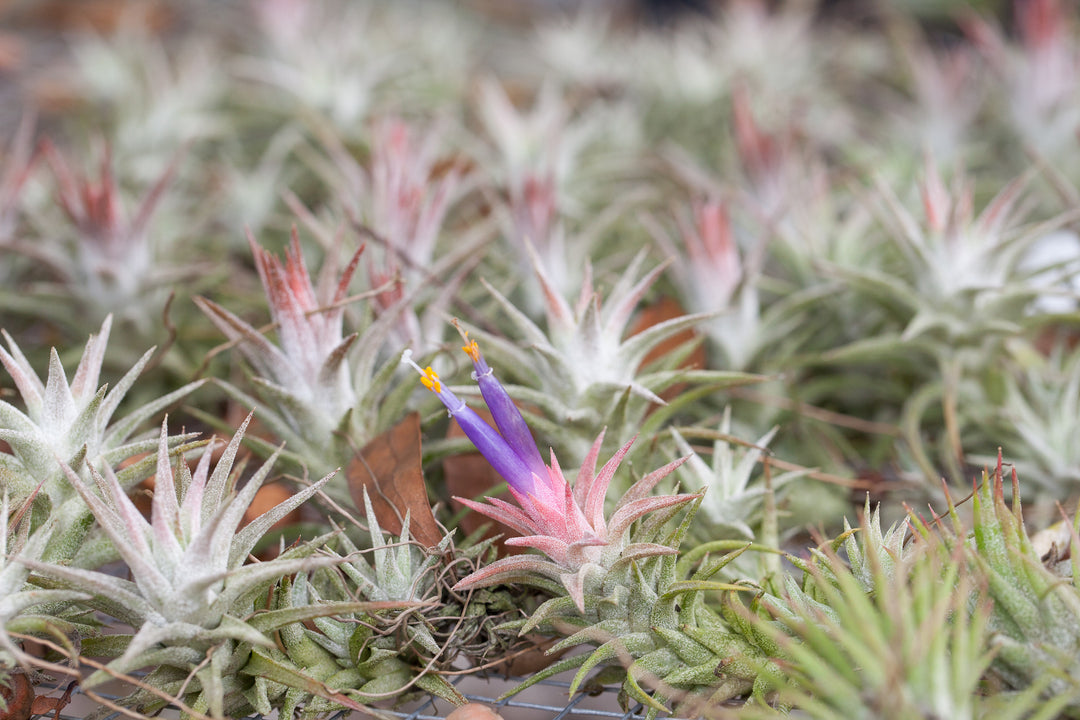Drought-Tolerant Tillandsia: The Best Air Plants For Drier Climates
Tillandsia air plants absorb nutrients and moisture through their leaves which means they don't require soil and can be very versatile plants in design. It also means that they can be sensitive to the amount of moisture in their environment, and as with all plants, certain air plants are better suited to some environments than others.
There are 2 main categories of Tillandsia: Mesic and Xeric - though many air plants will fall somewhere in the spectrum of these designations. Mesic air plants, in general, are characterized by greener leaves and less visible presence of trichomes (the fuzzy "hairs" that absorb moisture into the plant), and will want more water and less abundant bright light. Xeric air plants, in general, are characterized by silvery and sometimes fuzzy leaves due to their more abundant trichomes, and in general will want less water and more abundant bright light.
Read more about mesic and xeric air plants here.
Many air plants originate from tropical areas that are high in humidity, and because of this, may not thrive in drier climates. However, if you live in a dry climate, don't despair - there are a number of amazing, drought-tolerant air plants that could be a great choice for your space. Here are a few to consider:
T. tectorum ecuador: This fuzzy, rare Tillandsia is coveted by many air plant collectors, but can be an especially good choice for those who live in drier climates. Because of their extreme abundance of trichomes, which gives the Tilladsia tectorum ecuador its fuzzy, "snowball" look, these unique air plants will do well in dry climates. In fact in most climates, we recommend spraying/misting rather than soaking these fuzzy plants (though if you live in a super dry climate, you may need to spray more often or dunk from time to time). These air plants will want plentiful bright indirect light and is one of the few air plants that can actually handle (and thrive in) some direct sunlight.
T. tectorum peru: Another Tillandsia tectorum, this one named for its country of origin. T. tectorum peru is similar to the tectorum ecuador in its trichome-covered, snowy appearance but has thinner leaves and a longer base. These are super drought-tolerant (just like the tectorum ecuador) and are great air plants for a drier climate.

T. xerographica: The Queen of the Air Plants is well-loved for its large and striking appearance, but it can also be one of the easier air plants to care for due to the fact that it requires less frequent waterings. This drought-tolerant air plant is well suited for those in drier climates as it requires less water to thrive. We normally recommend dunking rather than soaking these royal beauties, though you may find that in drier climates, a soak every now and then could be helpful. The most important thing with these plants is not to let water sit for too long in their base. So xerographica can actually do well in areas with less humidity as it will allow these plants to dry quickly after watering. Make sure the T. xerographica gets lots of bright indirect light and these can actually handle small doses of direct sun too, unlike most Tillandsia.
T. gardneri: the Tillandsia gardneri air plant has wide, silvery, fuzzy leaves covered in trichomes, and can be a great choice for a drier environment. As with most air plants that lean toward the more xeric end of the spectrum, these beauties will want plentiful bright indirect light. While we normally recommend dunking these plants, if you are in a drier climate you may find that a soak once a week or so will help keep these air plants hydrated and healthy.
T. palacea: The unique Tillandsia palacea has a longer shape and will develop into a unique clump over time, making it a great air plant for any air plant collector. The Tillandsia palacea is particularly suited to drier climates as it is drought tolerant with abundant trichomes. Like with many xeric air plants, we recommend dunking versus soaking these - although if you live in a drier climate, you may want to give them slightly more frequent waterings. These will also love bright indirect light and lots of good air flow.
T. diaguitensis: Another unique air plant both for its tendency to grow in clusters, and its fragrant bloom (a rarity for Tillandsia), the Tillandsia diaguitensis is another good choice for a low-humidity environment as they are trichome-covered and will do well with less water.
T. duratii: The Tillandsia duratii is another drought-tolerant and hardy air plant that will produce a fragrant bloom. These unique Tillandsia take on an other-worldly shape when mounted or hung as their leaves will spiral an curl.
T. cacticola: while the Tillandsia cacticola may have a greener look than many xeric air plants, it displays the same velvety, trichome-covered leaves that make it a great choice for a drier climate.
Of course, as with all air plants, you should adjust watering to suit your environment and the response of your plants. If you live in a drier climate, even the more drought-tolerant air plants may want more frequent waterings than we generally recommend for these plants in areas with average humidity levels.
Shop all drought-tolerant air plants here.


